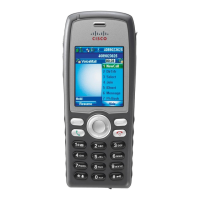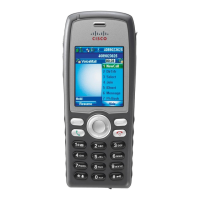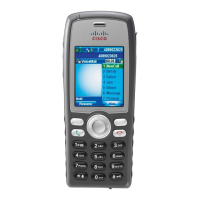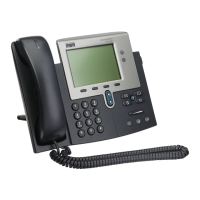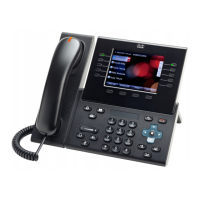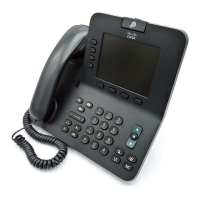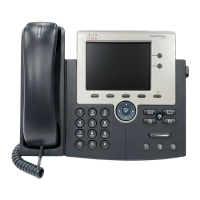10-9
Cisco Unified Wireless IP Phone 7925G Administration Guide for Cisco Unified Communications Manager 7.0(1)
OL-15984-01
Chapter 10 Troubleshooting the Cisco Unified Wireless IP Phone 7925G
Resolving Voice Quality and Roaming
If you are experiencing problems with the voice network, you should investigate whether an existing
problem is simply being exposed.
Verifying DHCP Settings
To determine if the phone has been properly configured to use DHCP, follow these steps:
Step 1 Verify that you have properly configured the phone to use DHCP. See the “Configuring DHCP Settings”
section on page 5-6 for details.
Step 2 Verify that the DHCP server has been set up properly.
Step 3 Verify the DHCP lease duration. Your local policy determines this setting.
Cisco Unified IP Phones send messages with request type 151 to renew their DHCP address leases. If
the DHCP server expects messages with request type 150, the lease will be denied, forcing the phone to
restart and request a new IP address from the DHCP server.
Verifying Voice VLAN Configuration
If the Cisco Unified IP Phone appears to reset during heavy network usage (for example, following
extensive web surfing on a computer connected to same access point and switch as phone), it is likely
that you do not have a voice VLAN or the appropriate QoS settings configured.
By isolating the wireless phones on a separate auxiliary VLAN, you can use QoS to prioritize the voice
traffic over data traffic and improve the voice quality. See the
“Voice QoS in a Wireless Network”
section on page 2-12 for details.
Verifying that the Phones Have Not Been Intentionally Reset
If you are not the only administrator with access to Cisco Unified Communications Manager, you should
verify that no one else has intentionally reset the phones.
Eliminating DNS or Other Connectivity Errors
If the phone does not register with Cisco Unified Communications Manager, check to see if you are
using host names or IP addresses for Cisco
Unified Communications Manager servers.
To eliminate DNS or other connectivity errors, follow these steps:
Procedure
Step 1 Reset the phone to factory defaults. See the “Erasing the Local Configuration” section on page 10-18 for
details.
Step 2 Modify DHCP and IP settings:
a. Disable DHCP. See the “Configuring DHCP Settings” section on page 5-6 for details.
b. Assign static IP values to the phone. See the “Configuring DHCP Settings” section on page 5-6 for
details. Use the same default router setting used for other functioning Cisco Unified IP Phones.
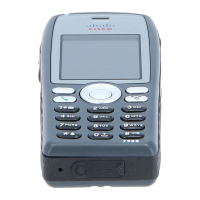
